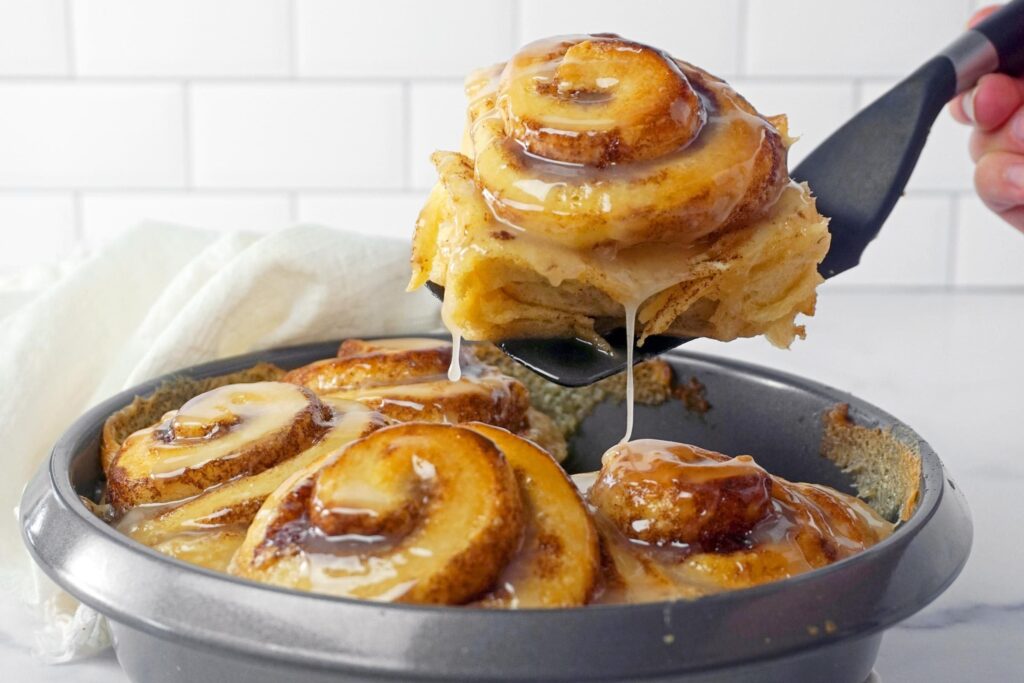INTRODUCTION
Cinnamon Rolls are originated in Northern Europe, specifically Sweden and Denmark, in the early 20th century. They gained popularity after world war 1, possibly due to the increased availability of affordable spices like cinnamon. The Swedish version, called kanelbulle, is a beloved pastry and even has its own “National Cinnamon Roll Day” on October 4th.
cinnamon rolls have become a global favorite for breakfast, brunch, or a cozy afternoon treat. Their irresistible aroma and melt-in-your-mouth texture make them a comforting classic that’s hard to resist.
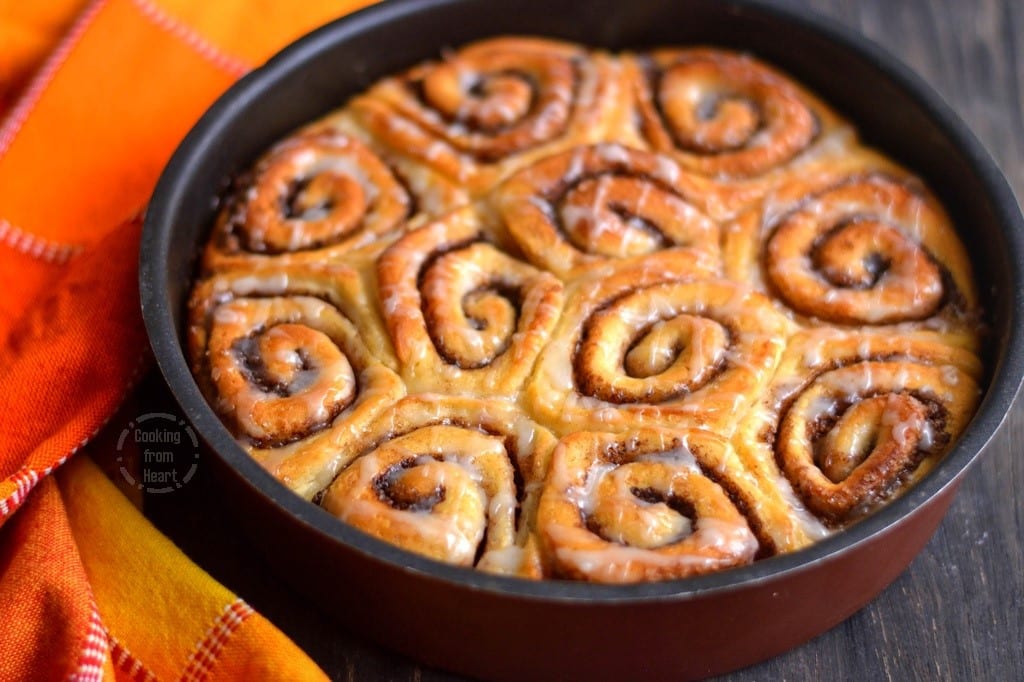
While the modern cinnamon roll is relatively recent, the use of cinnamon in baked goods has a much longer history potentially dating back to ancient Rome and Egypt, where cinnamon was used for various purposes, including medicinal and embalming.
European Expansion:Cinnamon rolls, or variations of them, spread to other European countries like Denmark and Norway, each developing their own unique twists on the recipe.
The American-style cinnamon roll, with its gooey texture and rich cream cheese frosting, gained popularity in the United States in the 20th century, especially as a weekend breakfast or holiday treat.
Modern Popularity: Today cinnamon rolls are a global treat, commonly found in cafes and bakeries worldwide, with variations in ingredients and toppings like frosting or cream cheese icing. Cinnabon, a chain specializing in cinnamon rolls, significantly boosted their popularity in the US and beyond.
Transatlantic Journey to North America:
European immigrants brought cinnamon roll recipes to North America, where they quickly became popular for their comforting flavour.
The cinnamon roll is a delicious and generous brioche. The original version originated in Northern Europe, but has been a great success in the United States, where its recipe has been developed. Easy to make, cinnamon rolls can be adapted in a thousand different ways allowing you to add your own personal twist.
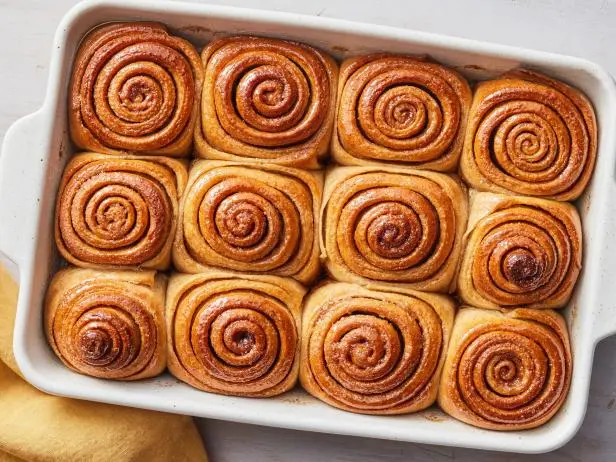
For the American chef, there aren’t necessarily any rules for making cinnamon rolls, but they have to be fresh. Cinnamon rolls are made from a brioche dough base. “You have to let the dough puff up, then deflate it slightly before rolling it out and
topping it with softened butter, sugar and cinnamon.” He points out that you can modify the filling to suit your taste: a little
cardamom for a Scandinavian touch, tahini (sesame cream) for a more Mediterranean recipe, and so on. Dried fruit and nuts such as walnuts or raisins can also be added.”Once the filling is spread, you then roll and cut it, the slices become the cinnamon rolls.”
INGREDIENTS OF CINNAMON ROLLS
| INGREDIENTS | QUANTITY |
| * All purpose flour | 500g |
| *Whole milk (warm) | 240g |
| * Granulated sugar | 75g |
| *Unsalted soft butter | 75g |
| * Eggs | 100g |
| * Instant dry yeast | 7g |
| * Salt | 8g |
FILLING
| INGREDIENTS | QUANTITY |
| * Brown sugar | 150g |
| * Ground cinnamon | 15g |
| * Unsalted soft butter | 60g |
CREAM CHEESE FROSTING
| INGREDIENTS | QUANTITY |
| * Cream cheese | 100g |
| * Unsalted soft butter | 50g |
| * Icing sugar | 100g |
| * Vanilla extract | 5g |
| * Milk | 1-2 tbsp |
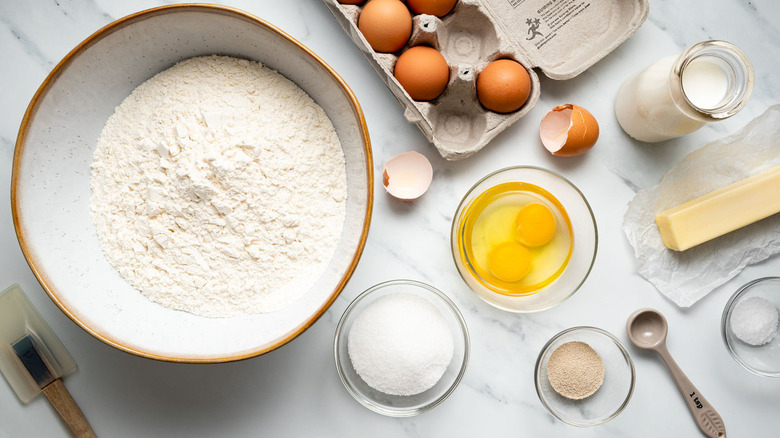
INSTRUCTIONS:
1. Make the Dough:
- In a large bowl or mixer, combine warm milk and yeast. Let sit for 5 minutes until slightly foamy.
- Add sugar, eggs, softened butter, and salt. Mix well.
- Gradually add flour. Knead for 8–10 minutes until the dough is smooth and elastic. It will be slightly tacky but not too sticky.
- Cover and let it rise in a warm place for 1 to 1.5 hours, or until doubled in size.
2. Make the Filling:
- Mix brown sugar and cinnamon together.
- Set aside softened butter for spreading.
3. Assemble Rolls:
- Roll the dough into a rectangle (~40x30cm).
- Spread softened butter evenly over the dough.
- Sprinkle cinnamon-sugar mixture evenly.
- Roll up tightly from the long side. Cut into 12 equal pieces.
4. Second Rise:
- Place rolls in a greased 9×13 inch (23×33 cm) pan.
- Cover and let rise for another 30–45 minutes, or until puffy.
5. Bake:
- Preheat oven to 180°C (350°F).
- Bake rolls for 22–25 minutes, or until golden brown on top.
6. Make Frosting:
- Beat cream cheese, butter, and vanilla until smooth.
- Add powdered sugar and beat until fluffy.
- Spread over warm (not hot) rolls.
TIPS FOR NICE CINNAMON ROLLS
- For extra softness, brush the rolls with milk before baking.
- Add raisins, nuts, or cardamom for variation.
Cinnamon Roll – Nutritional Facts
| Nutrient | Amount |
|---|---|
| Calories | 350–420 kcal |
| Total Fat | 14–18 g |
| – Saturated Fat | 6–8 g |
| Cholesterol | 30–50 mg |
| Sodium | 300–450 mg |
| Total Carbohydrates | 55–60 g |
| – Sugars | 20–30 g |
| – Dietary Fiber | 1–2 g |
| Protein | 4–6 g |
| Calcium | ~40–80 mg |
| Iron | ~1–2 mg |
KEY POINTS
- Calories and sugar content are high, mainly due to sugar, butter, and icing.
- The values can increase significantly if the cinnamon roll is extra large or topped with cream cheese frosting.
- Homemade rolls can be adjusted for healthier versions (e.g. using less sugar, low-fat dairy, whole wheat flour).
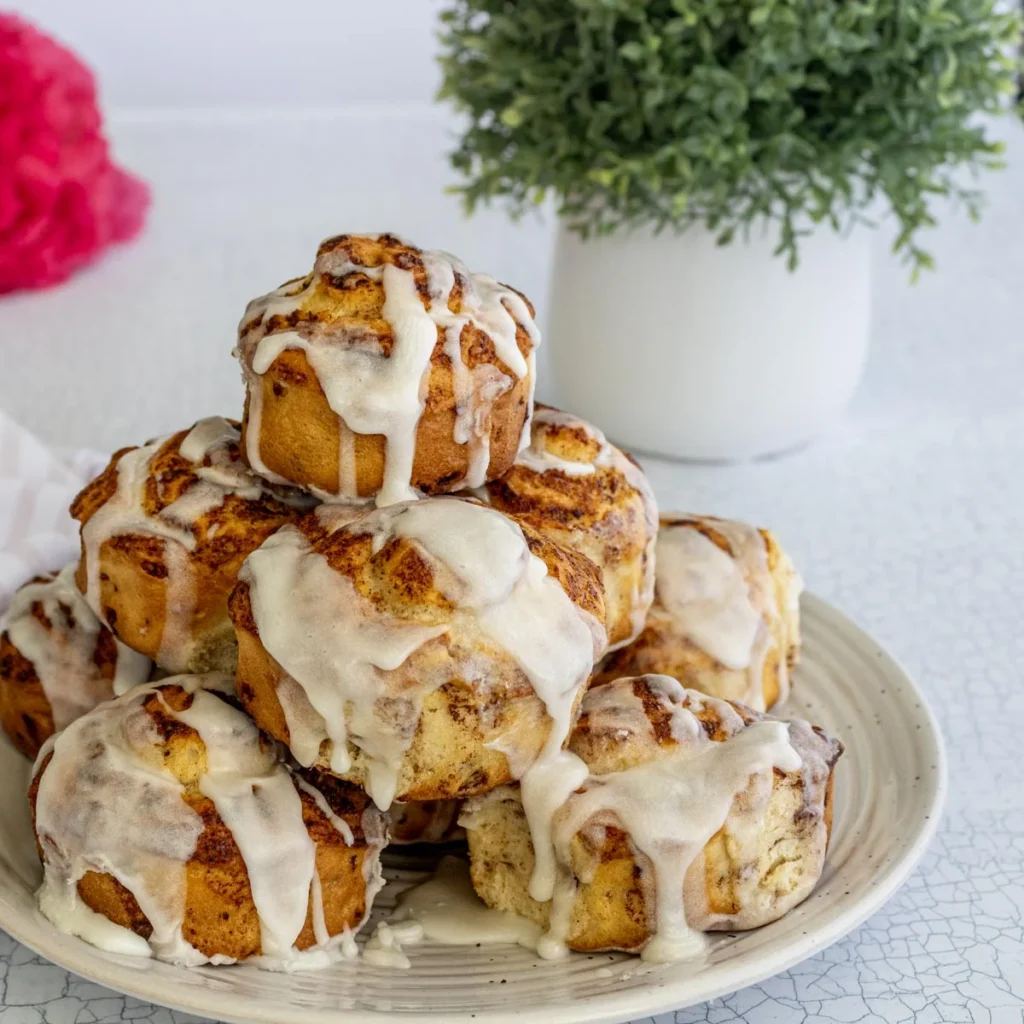
Serving & Variations
- Hot and fresh from the oven, often enjoyed with coffee or tea.
- Variations include:
- Sticky buns: caramel and nuts at the bottom, inverted after baking.
- Mini rolls: bite-sized, snack-friendly versions.
- Savory versions: filled with herbs, cheese, or bacon instead of cinnamon.
Cultural Significance
- In Sweden, cinnamon rolls are a symbol of “fika” – a traditional coffee break with baked goods.
- In the U.S., chains like Cinnabon made them globally popular, especially in malls and airports.
Fun Facts
- A giant cinnamon roll at the Iowa State Fair weighed over 9 kg (20 lbs)!
- The aroma of cinnamon is said to enhance memory and mood.
- Cinnamon has antioxidant and anti-inflammatory properties.
Conclusion:
Mastering cinnamon rolls at home is one of the most rewarding baking experiences you can have. From the soft, pillowy dough to the gooey cinnamon-sugar swirl and that irresistible creamy glaze, every bite is a comforting reminder of why homemade truly is best. While it may seem like a challenge at first, with a little patience and the right technique, you’ll find that baking cinnamon rolls from scratch is easier than you think—and infinitely more satisfying.
What makes homemade cinnamon rolls so special isn’t just their taste, but the entire process. Mixing the dough, waiting for it to rise, rolling and shaping each bun—there’s something soothing and joyful in the ritual. And the aroma that fills your kitchen as they bake? Pure magic.
Whether you’re making them for a cozy weekend breakfast, a holiday brunch, or just to treat yourself on a quiet afternoon, homemade cinnamon rolls are a sweet way to share love and warmth. Plus, with endless possibilities for fillings and toppings—from classic cream cheese frosting to nuts, fruits, or even chocolate—you can personalize them to suit any craving or occasion.
So don’t be afraid to roll up your sleeves and give it a try. Once you’ve tasted your own fresh, warm cinnamon rolls straight from the oven, you’ll wonder why you didn’t start sooner. Happy baking

